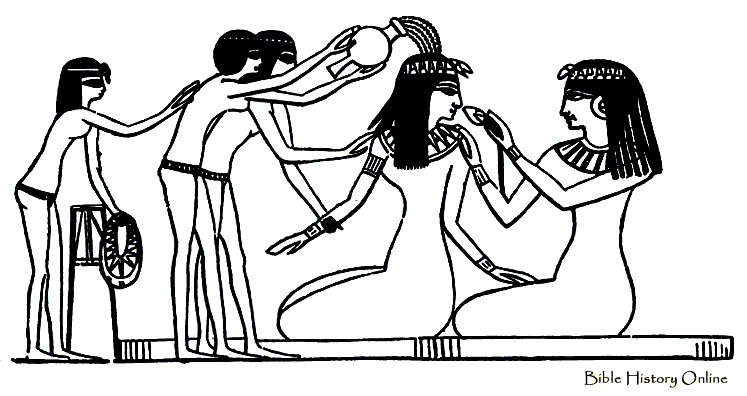History and art
World Baths History. Ancient Egypt.
Dating as far back as 2000 BC, ancient Egyptians were amongst the first to widely adopt the power of the hot tub for its therapeutic values.
Egyptians and Cleanliness
These hot tubs consisted of a water-filled caldera that was then heated by placing red-hot stones in the water.
Due to the climate, (remember, we are in Egypt where it’s hot hot hot) Egyptians were fixated on cleanliness, often bathing up to 4 times a day.
It also was believed that the cleaner and well-oiled the person was, the closer they were to the gods. Hygiene, makeup, and clothing was also considered essential when burying the dead, as it would assist them during the Judgment of the Dead, their gateway to the afterlife. Egyptians used a scented paste consisting of ash and clay for soap, and the Ebers Papyrus, a source for medical knowledge, instructed people to mix animal and vegetable oils with alkaline salts for washing and treating skin diseases. Many washed themselves several times a day, including after rising and before and after meals, though “washing” typically meant rinsing their hands, faces, or feet in water basins with the aforementioned pastes. Plucking and shaving all of their hair (instead choosing to wear wigs and draw on eyebrows) was also a popular trend of beauty among both men and women.
To clean themselves while bathing, the Egyptians used natron – a soda ash that when blended with oil made soap. Natron was also used when mummifying the dead. The rich had bathing facilities in their places of residence while everyone else bathed in the Nile.
The homes of the wealthy were airy and roomy. There were bedrooms, servant’s quarters, halls, dining rooms – and BATHROOMS! Actually, a “bathroom” was usually a small recessed room with a square slab of limestone in the corner. There the master of the house stood or sat while his servants liberally doused him with water. Well, we can’t really call that a “bath” now can we? That is a “shower”. However, there is evidence from excavating that there were wonderful large public bath houses with showers, stone basins and stoves to heat the hot water.
Egyptian Bath Design
Egyptians loved bathing with essential oils and flower oils – because they were no fools and understood the power of aromatherapy
The design of the Egyptian bath of those years was very interesting. It was a two-storey building made of natural stone. The first floor was completely designed for steam production.Visitors went up to the second floor, where they could lie on warmed-up steam, stone beds and get a therapeutic massage with therapeutic ointments. Instead of soap, a mixture of beeswax and water was used at that time.
In the middle of the floor was a hole through which hot steam came from the lower floor. The floor had a special construction to collect water, which was subsequently diverted to the city sewers.
Also on the second floor there was a swimming pool for taking contrast baths, there was a gym and a room where people could get medical help.

Of course, you can’t talk about Egyptian baths without mentioning Cleopatra, the last pharaoh of Ancient Egypt. She was renowned throughout history for her radiant skin and her stunning beauty. To keep her skin soft and beautiful she was said to bathe in milk. However, Cleopatra didn’t bathe in cow’s milk, nope, the milk for her legendary baths was instead provided by donkeys. She might have had up to 700 lactating donkeys at time to keep her in milk baths.
source: russkaya-banja.ru, www.thebathtubdiva.com

